Written by Joshua Bush and published on https://www.hunker.com/
Wounds attract pests due to the phytochemicals dispersed from exposed tissue. When tree tissue is damaged or wounded, the newly uncovered tissue is exposed and that is when to expect an attack. Insect pests are drawn to trees in distress, feeding on the tissue and weakening the tree. Diseases affecting trees will introduce enzymes into the cells, digesting living tissue responsible for food and water translocation (phloem and xylem) or structural support resulting in unhealthy, unsightly, or unsafe trees.
Homemade Tree Wound Remedies
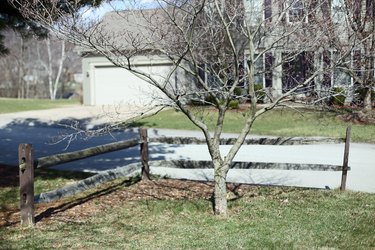
Whether broken during storm winds or cut during pruning, any break in the bark of a tree is considered to be a wound. Trees have a natural healing response that seals off and compartmentalizes the damage they receive. This natural response is impeded by homemade tree wound remedies such as petroleum and latex based paints, which are only recommended as protection in areas with a high prevalence of tree diseases. There are better methods of helping trees to recover from wounds.
Tree Wound Response
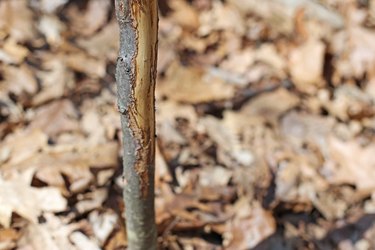
Trees seal off damaged areas, both inside and outside, rather than actually healing the damaged wood. On the outside, trees form callus wood that slowly grows around the edges of the wound so that new, healthy wood covers old injuries. The damaged wood is eventually covered, but remains in the tree. On the inside, the tree creates barriers to control the spread of fungi and other microorganisms. The tree’s sap and resins plug the water and nutrient transport vessels, creating both a physical and a chemical deterrent to decay.
Problem With Painted Remedies
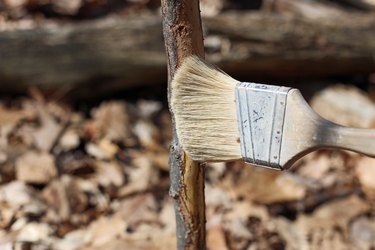
The tree’s natural remedies require the infiltration of oxygen into the wounded wood. Painted remedies that seal off an area from the environment are meant to keep out disease, insects and microorganisms. However, they also keep out the oxygen that the tree needs to complete its own healing response. As a result, wood decay is often accelerated behind the homemade or commercial painted remedies. In some areas, disease transmission and invasive insects are a prominent danger to tree health, such as areas susceptible to oak wilt and invasive beetles. In such cases, a thin layer of fungicide or insecticide can be painted over the wound.
Pruning as a Remedy
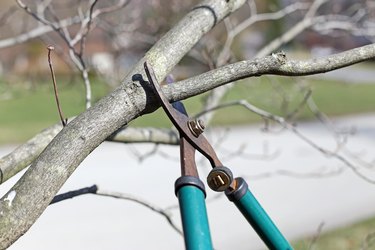
Pruning a broken branch back to a better place is usually the recommended method of helping the tree to heal its wound. A tree can more easily cover a clean pruning cut with callus tissue than a rough break from strong winds or heavy snow and ice. If you are trying to help a tree heal from broken branches, prune the branch back to the edge of the branch collar, rather than flush with the trunk for the best healing. Remove dangerous, hanging branches as soon as possible, but final pruning should done in late winter or early spring just before the sap begins to rise in the wood again and insect populations are low. Before and after pruning a tree, disinfect your tools with alcohol or other household disinfectants to prevent disease transmission, making sure to dry the tool so the disinfectant does not contact the tree.
Water and Fertilizer as a Remedy
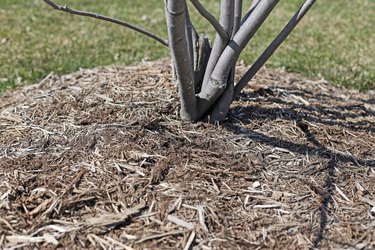
If a tree is stressed from environmental factors, its healing response will be slower than the response of a healthy tree, putting it at risk. Make sure the tree is adequately watered. Examine other branches and leaves to see if recent growth has been slow, indicating the tree needs to be fertilized. Mulching around the base of the tree, beginning a foot away from the trunk and making a bed several inches deep, will help keep nutrients and moisture near the roots where they are needed. Mulch beds also prevent root injury from landscaping equipment and animal damage.
Original post here https://ift.tt/3wHSIow.
from AAA Tree Lopping Ipswich https://ift.tt/2Sx78ZH
via IFTTT
No comments:
Post a Comment